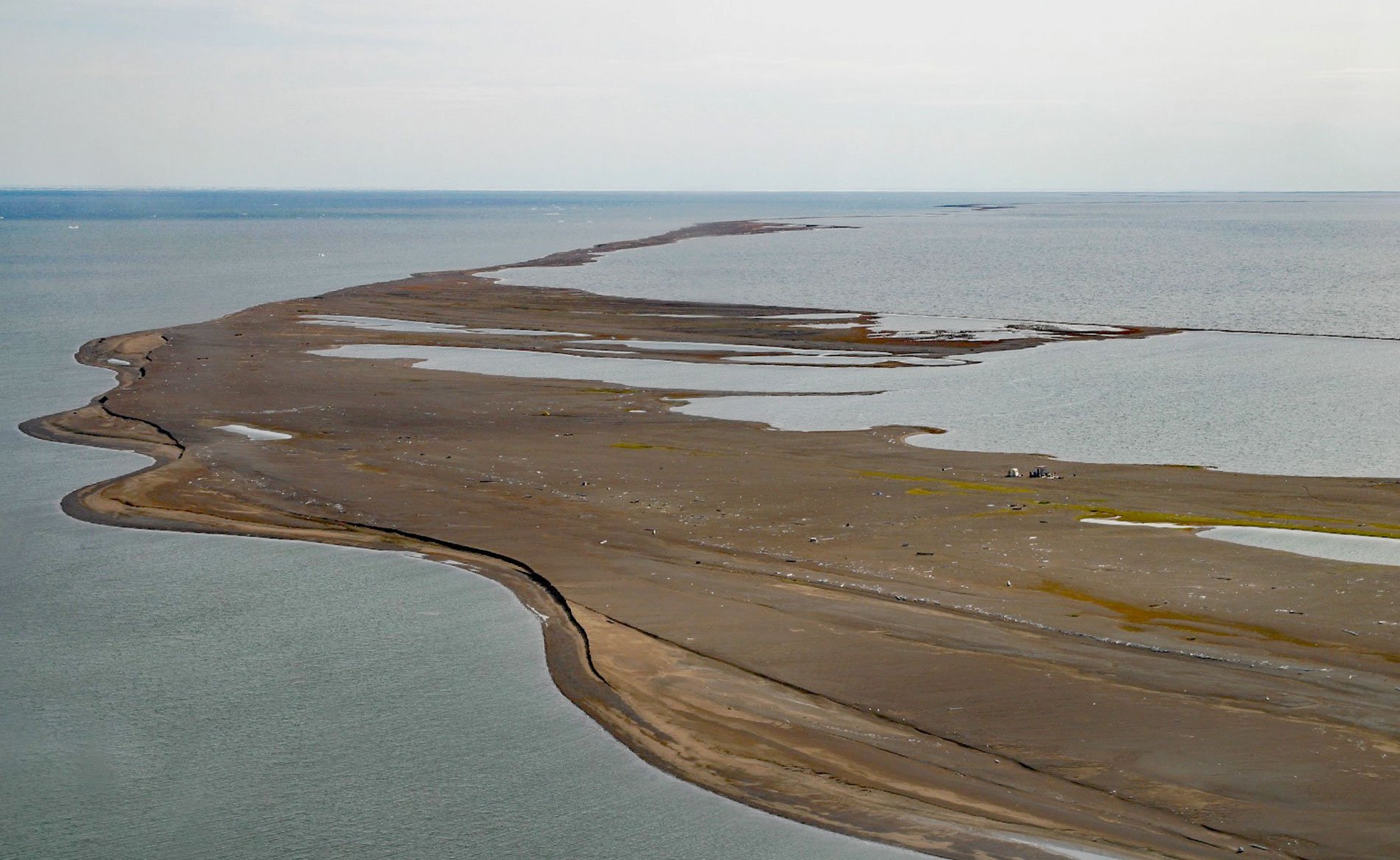Cooper Island is an Arctic barrier island and one of the Plover Islands on Elson Lagoon on the Beaufort Sea coast, about 129 miles (208 km) northwest of Nuiqsut and 24 miles (39 km) east of Utqiaġvik, Alaska. The Iñupiat name for the island is Lglurak, generally meaning ‘sod house like’ because two mounds on the island appear like sod houses from a distance. Elson Lagoon extends southeast of Point Barrow between the Plover Islands and the mainland coastal plain. The lagoon was named in 1826 by Captain Frederick W. Beechey for Thomas Elson of HMS Blossom. In 1825, Beechey was appointed to command HMS Blossom and tasked with exploring the Bering Strait from west to east while Sir John Franklin explored the Canadian Arctic from east to west. In the summer of 1826, Beechey passed through the Bering Strait, and then because of sea ice blocking further progress, he sent a small party commanded by Elson in an open boat to explore the coast from northeast of Icy Cape in the Chukchi Sea to Point Barrow. In 1849, Commander Thomas E. L. Moore on HMS Plover was sent to search for the lost Franklin Expedition, and in July, Plover reached Kotzebue Sound and could not proceed because of sea ice. Moore sent William Pullen and a small party consisting of 2 officers, 22 men, and 4 boats to explore the coast as far as the Mackenzie River. At Point Barrow, the ice was so thick that Pullen sent the two largest boats back. He now had 13 men, two whaleboats, and a purchased umiak. The party reached the mouth of the Mackenzie River on 2 September, becoming the first Europeans to sail along the north coast of Alaska from the Bering Strait to the Mackenzie River in Canada. Cooper Island was named for one of the ship’s officers. The name Plovers Group was originally applied only to the islands northwest of Ekilukruak Entrance but now the Plover Islands include all the barrier islands between Plover Point and Mackay Inlet.
Arctic barrier islands are highly dynamic features influenced by a variety of oceanographic, geologic, and environmental factors. The formation of Arctic barrier island chains is not well understood but includes two major types. The first are recently constructed islands and spits dominated by littoral processes, and the second are remnant barriers, typically with a permafrost tundra core, formed by detachment from geologically older relict coastlines. The latter may be related to the thermal and mechanical erosion of freshwater lakes on the adjacent coastal plain. Shoreline erosion of adjacent small lakes eventually causes them to join together to form larger lakes, and this process continues until an opening is created to the sea and the lake becomes a lagoon. Tidal flushing will then accelerate the shoreline erosion producing large linear embayments. The rapid retreat of the lagoon shorelines will widen the embayments and breach the outer shore generating a series of offshore permafrost tundra remnants. These remnants project as points into the lagoon. The outer seashore of the remnant is straightened by wave action and subsequently protected and stabilized by new beach deposits. With continued erosion, these permafrost remnants remain as barrier islands. The presence of sea ice and permafrost helps protect Arctic barrier islands from erosion for much of the year. But once the ice retreats and the permafrost thaws, heavy winds, waves, and freshwater currents can quickly erode the islands from all directions, changing their shape and size, and in some cases making them disappear. Substantial reworking of the sediments can occur by ice shoving during the winter and by storm surges in the summer. Moderate summer storms may increase the resilience of the barrier by adding sediment to the islands allowing for lateral migration and vertical accretion as sediments are delivered to the backshore of the barrier platform.
Arctic barrier islands provide shelter and nesting habitat to shorebirds, denning habitat for polar bears, haulout areas for walruses, and physical protection of the mainland shore from direct wave attack. They serve as sites for energy and defense-related infrastructure and are home to many native subsistence hunting camps. These barriers islands are vulnerable to climate change because the warming Arctic has resulted in the melting of sea ice and permafrost and the barrier islands are now more susceptible to wave erosion. Recently measured erosion rates in the Beaufort Sea show Arctic barrier islands eroding three to four times faster than islands in more temperate climates. Further acceleration in erosion rates could result in the rapid breakup of many Arctic barrier islands potentially exposing the mainland coast to waves and storms that will cause flooding and degradation of coastal villages and oil and gas infrastructure. In the early 1970s, George Divoky found on Cooper Island a small colony of black guillemots, a seabird with black summer plumage and large white wing patches. The black guillemots were using wood debris left by the U.S. Navy in the 1950s as nest cavities for breeding. Divoky became so enamored with the island and the birds that he returned each summer since 1975. His study of the birds and the island has evolved from the biology of an intriguing bird species to a tale about the effects of climate change on Arctic barrier islands and the animals that depend on them. Read more here and here. Explore more of Cooper Island here:

